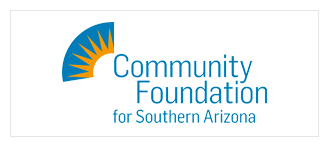 How Does Clinical Care Measure Up in the Tucson, Arizona MSA
How Does Clinical Care Measure Up in the Tucson, Arizona MSA
Access to health care is a key component of community well-being and a measure of how a region supports the health of its residents. In the Tucson Metropolitan Statistical Area (MSA), access to primary care physicians, mental health providers, and dentists is below national averages, highlighting challenges for our region in building a strong clinical care infrastructure. This article examines the region’s clinical capacity across these areas, comparing Tucson’s performance to peer communities and the nation to better understand where progress is being made and where gaps exist.
Clinical care depends on having enough providers to meet community needs. This analysis focuses on three key measures: primary care physicians, mental health providers, and dentists. Provider availability is fundamental to clinical care capacity and directly influences how well a community’s health needs are met. According to County Health Rankings & Roadmaps, adequate numbers of primary care physicians are essential for preventative care and referrals, while insufficient supply is linked to higher rates of hospitalization and poorer health outcomes. In 2021, the U.S. had a Primary Care Physician (PCP) rate of 97.1 per 100,000 population, meaning there were about 97 primary care doctors available for every 100,000 residents nationwide. Among MAP’s peer western MSAs, Denver had the highest rate at 92.2 per 100,000, followed by Albuquerque at 91.5. Tucson ranked third at 87.1, well below the nation, but relatively strong within the region (see Figure 1).
Figure 1: Primary Care Physician (PCP) Rate by MSAs (2021)
The provider rates presented in this article reflect the most recent data available from the County Health Rankings as the of time of publication: 2021 for primary care physicians, 2022 for dentists, and 2024 for mental health providers. Although the data years vary, these snapshots offer the latest insights into provider availability across the regions studied.
Why Clinical Care and Health Infrastructure Matter
Clinical care and health infrastructure include the services, facilities, and resources that keep communities healthy and prevent disease. This includes primary, specialty, and dental care delivered through hospitals, clinics, and long-term care settings, as well as public health programs that monitor and respond to community needs. To promote health equity, care must be accessible, safe, affordable, timely, and culturally responsive.
According to Healthy People 2030, a national initiative led by the U.S. Department of Health and Human Services, a well-functioning health infrastructure depends not only on facilities and services but also on trained professionals, real-time data, and collaborative systems that can respond to evolving public health needs. Additionally, the physical and organizational design, such as safe hospital layouts, up-to-date medical equipment, and integrated technology systems, plays a crucial role in supporting both patient care and staff well-being. A thoughtfully built health system improves outcomes, boosts efficiency, and makes it easier for people to receive continuous and coordinated care1.
Provider Availability: A Key Measure of Clinical Capacity
In 2021, Pima County, which corresponds geographically to the Tucson MSA, reported the highest Primary Care Physician (PCP) rate among Arizona counties, with 87.1 physicians per 100,000 population. Coconino County followed with 82.0 physicians per 100,000. In contrast, Pinal County’s rate of 17.8 illustrates a significant gap in access to primary care across Arizona (see Figure 2).
Figure 2: Primary Care Physician (PCP) Rate by Arizona Counties (2021)
Mental Health and Dental Provider Availability
Limited access to mental health professionals and dentists can leave significant gaps in diagnosis, treatment, and ongoing care. When provider shortages occur, individuals may delay or forgo essential services, increasing the risk of preventable complications and widening health disparities. Metrics such as the ratio of population to primary care physicians and mental health providers offer clear insight into a community’s clinical capacity and its ability to deliver timely, continuous, and high-quality care.
In 2024, the U.S. had a mental health provider rate of 333.3 per 100,000 population. Among Tucson’s peer MSAs, Salt Lake City stood out with the highest rate at 555.8 providers per 100,000, indicating strong access to mental health services. In contrast, Tucson ranked second to last with a rate of 240.5, while Phoenix had the lowest at 201.5. Both Arizona metros fell well below the national rate, highlighting gaps in mental health care availability across the state of Arizona (see Figure 3).
Figure 3: Metal Health Provider Rate by MSAs (2024)
In 2022, the U.S. had a dentist provider rate of 73.5 per 100,000 population. Among Tucson’s peer MSAs, El Paso reported the highest rate at 130.2 providers per 100,000, followed by Colorado Springs at 101.8 and San Diego at 98.7, indicating stronger access to dental care in those regions. In contrast, Tucson had a significantly lower rate at 67.2, while Las Vegas had the lowest at just 51.8 (see Figure 4).
Figure 4: Dentists Rate by MSAs (2022)
Looking Ahead: Projected Supply and Demand for Primary Care Workers.
Between 2025 and 2035, both the U.S. and Arizona are projected to face growing shortages of primary care physicians. According to National Center for Health Workforce Analysis projections, Arizona will have only 55.3% of the primary care providers it needs by 2035; down from 64.5% in 2025. Closing this gap will require an additional 3,870 physicians to meet projected demand and address the Health Professional Shortage Areas (HPSAs) across the state.
To help address this shortage, the University of Arizona has introduced initiatives to accelerate the path to becoming a primary care physician. Notably, the Arizona Board of Regents approved a three-year medical degree pathway at the university’s two separately accredited medical schools. This accelerated program aims to produce primary care providers more quickly, directly addressing the state's physician shortage.
Nationally, primary care adequacy is expected to decline from 85.7% in 2025 to 77.7% in 2035, a drop of 8.0 percentage points. Arizona’s decline of 9.2 points is steeper, indicating that the state’s shortage is declining faster than the national trend (see Figure 5).
Figure 5: U.S. & Arizona Supply and Demand of Primary Care Workers (2025-2035)
The primary care workforce presented in this MAP article includes Family Medicine Physicians, General Internal Medicine Physicians, Geriatrics Physicians, and Pediatrics Physicians. Data in Figure 5 are sourced from the National Center for Health Workforce Analysis projections dashboard.
Conclusion
Clinical care is a critical pillar of community health, and the availability of healthcare providers directly impacts health outcomes across the Southern Arizona region. This article highlights key disparities in access to primary care physicians, mental health providers, and dentists, particularly in Arizona, where provider availability often falls below national averages. With workforce projections indicating growing shortages in the years ahead, strengthening the state’s clinical care infrastructure will be essential to meeting the needs to a changing population. A well-supported healthcare workforce is not only vital to improving health equity but also to ensuring long-term community resilience.
This article is the first in a three-part series exploring the key components of community health through the lens of the County Health Rankings model. The series will provide a deeper understanding of the factors that shape public health in Arizona, with each article focusing on a specific dimension of the model. Stay tuned for the next two articles, which will explore lifespan and quality of life.
Reference:
1 Luxon L. Infrastructure - the key to healthcare improvement. Future Hosp J. 2015 Feb;2(1):4-7. doi: 10.7861/futurehosp.2-1-4. PMID: 31098066; PMCID: PMC6465866.












